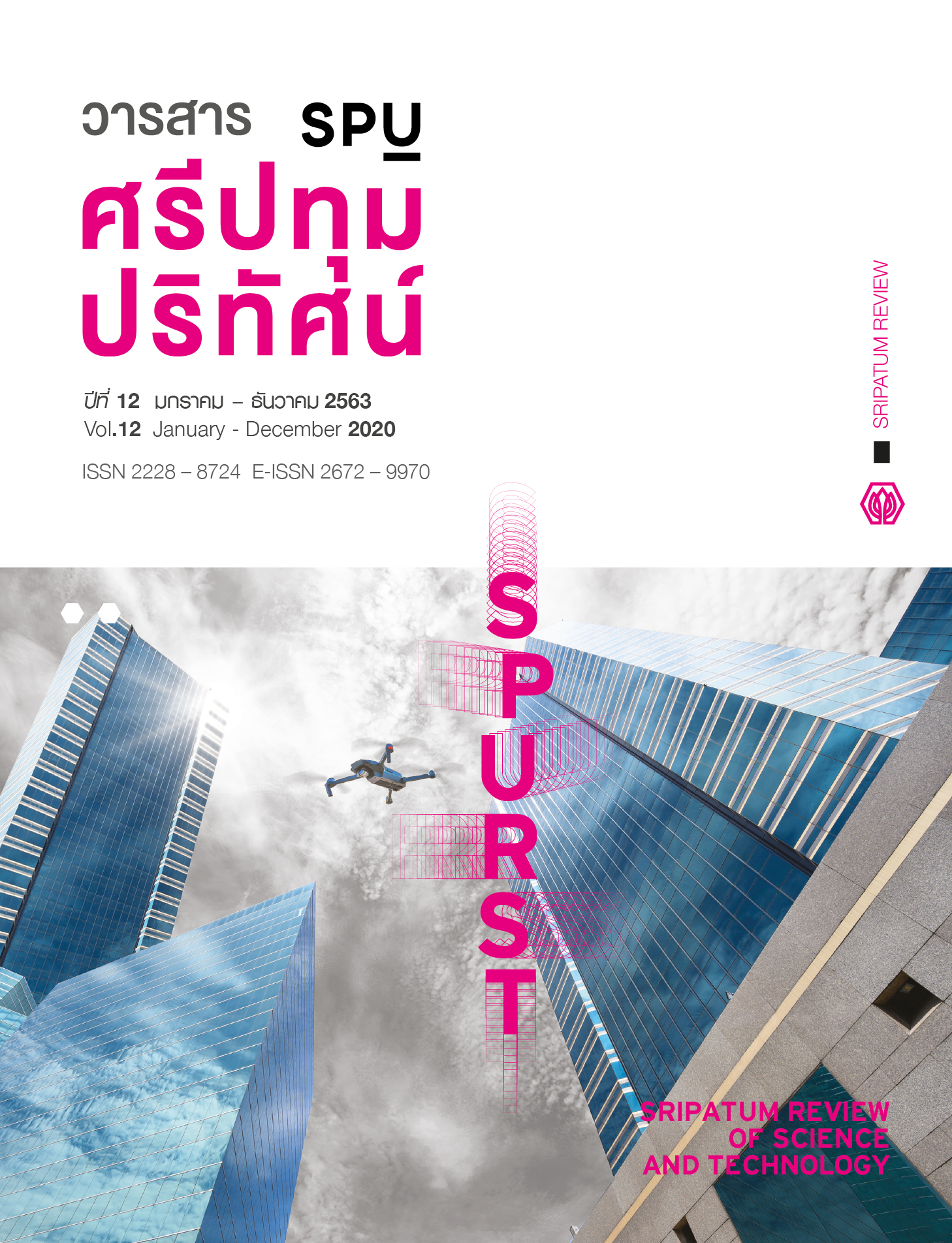Drone for Detecting Forest Fires using Deep Learning Technique
Main Article Content
Abstract
The objectives of this research are (1) to develop a prototype drone for monitoring forest fires using deep learning techniques; (2) to develop an automatic system for detecting the forest fire images; and (3) to develop a warning system for a forest fire. The research process comprised 3 main steps. The first step was the preparation of images for processing. In this step 100 forest fire images and 100 non-fire images captured by drones were collected. The second step was the taking of the collected images to be used as a training set for training the system by forming the deep learning models using the Tensor Flow library for detecting a forest fire. The third step was the result display step. The research sample for studying the satisfaction with the model consisted of 5 experts and 27 general users. The research tools were (1) the application for forest fire detection, and (2) a questionnaire to assess satisfaction. The statistics used in this research were the accuracy index, mean, and standard deviation. The results show that there is 100 percent of accuracy for the non-forest fire sample image set; for the sample image set of forest file, there is 90 percent of accuracy; the accuracy for outdoor detection is 80 percent; and the result of the satisfaction assessment by the general users is at the high level, with the satisfaction rating mean of 4.13.
Article Details
References
Academic Division of Forest Fire Control Division. (2011). Application of remote sensing techniques in order to assess the burning forest area Forest conservation area. Bangkok: Bureau of Forest Fire Suppression and Control, Department of National Parks, Wildlife and Plant Conservation. (in Thai)
Boonlua, T. (2018). Applying Drone for Generated Building Information Modeling (BIM) for Urban Architecture, the Case study of That Phanom District, Nakhon Phanom Province. Journal of Faculty of Architecture, 26, 137-148. (in Thai)
Carrio, A. Sampedro, C. Rodriguez-Ramos, A. and Campoy, P. (2017). A Review of Deep Learning Methods and Applications for Unmanned Aerial Vehicles. Journal of Sensors,2,1-13.
Fuangpian, T. Muneesawang, P. and Yammen, S. (2011). An Algorithm for Detection of Solder Balls on HGA. Naresuan University Journal, Special Issue, 24-32. (in Thai)
Hongboonmee, N. and Sangtan, K. (2019). Development Application for Identify Thai Banknote by Voice for Blindness via Smartphone. Journal of Information Science and Technology, 2, 24-34. (in Thai)
Jaroenjit, J., Panpanasakul A., Chaisri P., Promduang P. and Prompongusawa S., (2018). Classification pearls using image processing. The Proceedings of the 9th Hatyai National and International Conference, Faculty of Business Administration Building Hat Yai University, 20-21 July 2018, 1679-1691. (in Thai)
Rattanachuchok, P.(2019). Development of Water Quality Measurement Systems Using IoT to Monitor Water Quality through an Application. Sripatum Review of Science and Technology, 11, 7-22. (in Thai)
Yongying, N. (2019). A Deep Learning Approach on Road Detection from Unmanned Aerial Vehicle-Based Images in Rural Road Monitoring. Thesis of the Degree of Master of Science in Geography. Pitsanulok: Naresuan University. (in Thai)
Pholberdee, N. (2018). Wound-Region Segmentation from Image by Using Deep Learning and Various Data Augmentation Methods. Thesis of the Degree of Master of Science in Information Technology. Nakhon Pathom: Silpakorn University. (in Thai)


